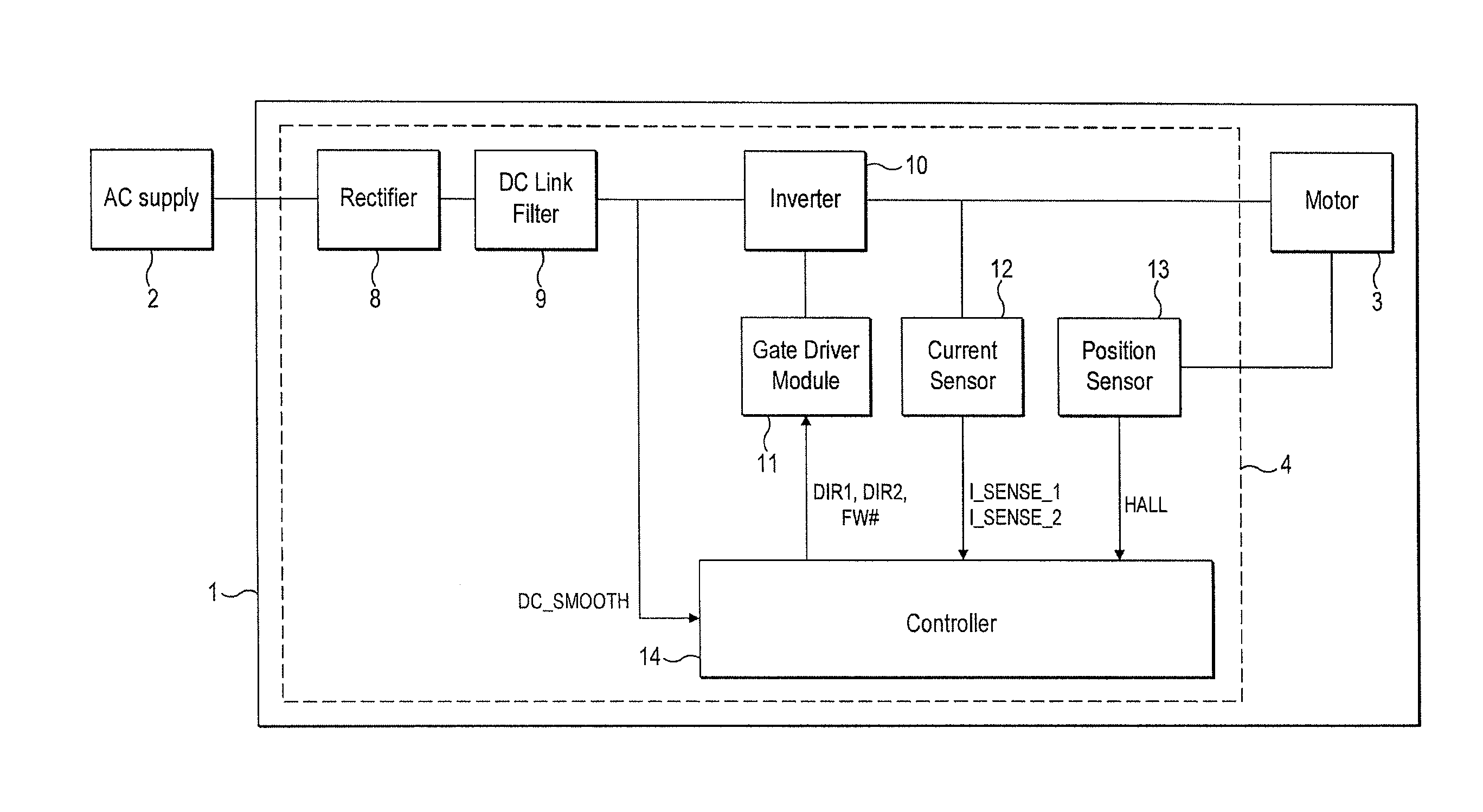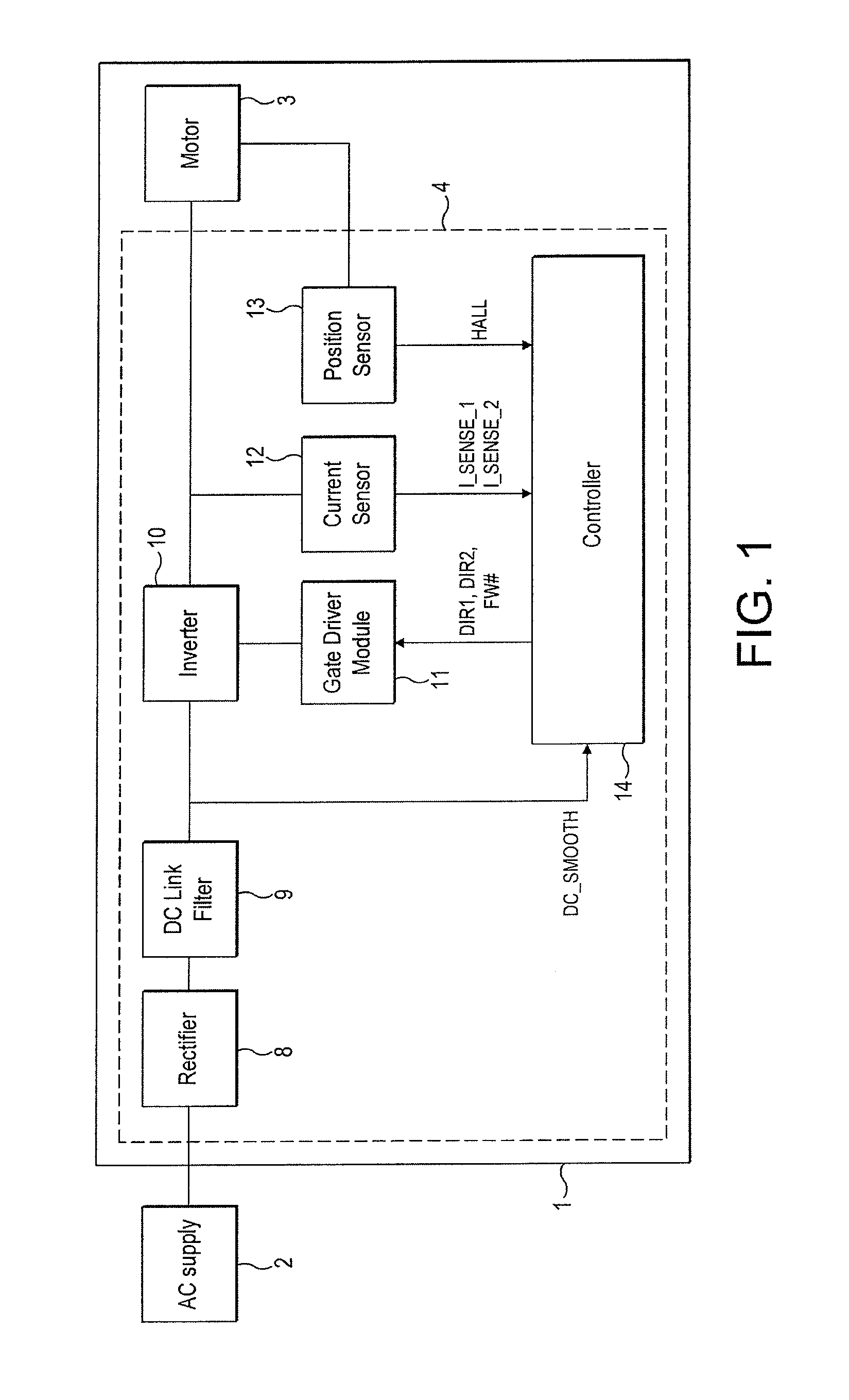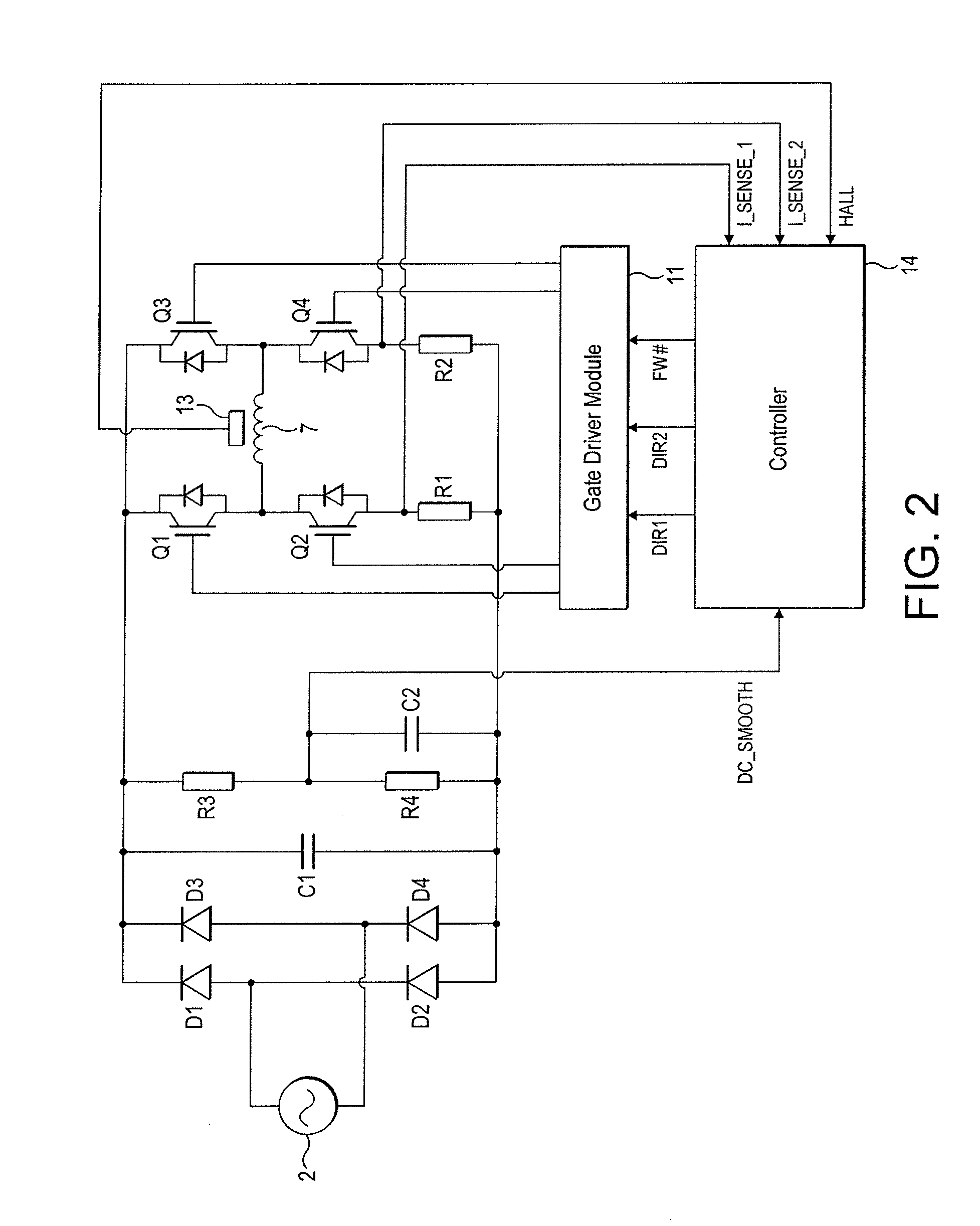Control of an electrical machine
a technology of electrical machines and control devices, which is applied in the direction of dynamo-electric machines, multiple motor speed/torque control, synchronous motor starters, etc., can solve the problems of uneven duty cycle of signals and adverse effects on the performance of electrical machines, and achieve the effect of improving power and/or efficiency of electrical machines, stable electrical machines, and reducing harmonics within current waveform drawn from ac power supply
- Summary
- Abstract
- Description
- Claims
- Application Information
AI Technical Summary
Benefits of technology
Problems solved by technology
Method used
Image
Examples
Embodiment Construction
[0024]The motor system 1 of FIGS. 1 to 3 is powered by an AC power supply 2 and comprises a brushless motor 3 and a control system 4.
[0025]The motor 3 comprises a four-pole permanent-magnet rotor 5 that rotates relative to a stator 6. The stator 6 comprises a pair of c-shaped cores that define four stator poles. Conductive wires are wound about the cores and are coupled together to form a single phase winding 7.
[0026]The control system 4 comprises a rectifier 8, a DC link filter 9, an inverter 10, a gate driver module 11, a current sensor 12, a rotor-position sensor 13, and a controller 14.
[0027]The rectifier 8 comprises a full-wave bridge of four diodes D1-D4 that rectify the output of the AC power supply 2 to provide a DC voltage.
[0028]The DC link filter 9 comprises a capacitor C1 that smoothes the relatively high-frequency ripple that arises from switching of the inverter 10. If required, the DC link filter 9 may additionally smooth the rectified DC voltage at the fundamental fre...
PUM
 Login to View More
Login to View More Abstract
Description
Claims
Application Information
 Login to View More
Login to View More - R&D
- Intellectual Property
- Life Sciences
- Materials
- Tech Scout
- Unparalleled Data Quality
- Higher Quality Content
- 60% Fewer Hallucinations
Browse by: Latest US Patents, China's latest patents, Technical Efficacy Thesaurus, Application Domain, Technology Topic, Popular Technical Reports.
© 2025 PatSnap. All rights reserved.Legal|Privacy policy|Modern Slavery Act Transparency Statement|Sitemap|About US| Contact US: help@patsnap.com



